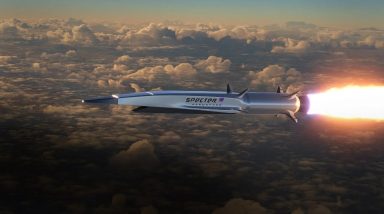The Pentagon has set its sights on advancing hypersonic propulsion technology through a recent deal that aims to explore the potential of plasma-assisted systems. This breakthrough initiative holds the promise of significantly enhancing the capabilities of hypersonic vehicles, opening up new possibilities for military applications. In this blog post, we delve into the details of this exciting development and its potential impact on the future of defence technology.
The Quest for Hypersonic Propulsion
Hypersonic propulsion, which enables aircraft or missiles to travel at speeds exceeding Mach 5 (approximately 3,800 mph), has gained considerable attention in recent years. Its potential for rapid, long-range strikes and enhanced manoeuvrability has made it a key area of focus for defence agencies worldwide. However, the technological challenges associated with achieving sustained hypersonic flight have posed significant obstacles.
Advancing Hypersonic Propulsion through Plasma
In a bid to overcome these challenges, the Pentagon has entered into a collaborative agreement to investigate the benefits of plasma-assisted hypersonic propulsion. Plasma, a state of matter in which atoms become ionized, has unique properties that can potentially improve engine efficiency and increase thrust. By introducing plasma into the hypersonic flow, it is believed that this technology could enhance propulsion and overall vehicle performance.
The Collaborative Effort
Under the agreement, the Pentagon will collaborate with an industry partner to conduct research and development in the field of plasma-assisted hypersonic propulsion. The partnership will leverage the expertise of both defence scientists and private sector engineers, fostering innovation and the exchange of knowledge. This collaborative approach holds the potential to accelerate progress in the development of hypersonic propulsion systems.
Military Applications and Future Implications
The successful integration of plasma-assisted technology into hypersonic propulsion could revolutionize military capabilities. Hypersonic weapons with enhanced speed, range, and manoeuvrability would offer strategic advantages in various scenarios, including precision strikes, intelligence gathering, and rapid response. Additionally, advancements in hypersonic propulsion could also have significant implications for civilian applications, such as high-speed transportation and space exploration.
Challenges and Considerations
While the pursuit of plasma-assisted hypersonic propulsion is undoubtedly exciting, it is essential to address potential challenges and considerations. These may include the need for advanced materials that can withstand extreme temperatures, safety concerns, and regulatory frameworks governing the use of hypersonic systems. Rigorous testing, safety protocols, and international cooperation will be vital to ensuring responsible and secure deployment.
Conclusion
The Pentagon’s focus on plasma-assisted hypersonic propulsion marks a significant step forward in advancing the capabilities of hypersonic vehicles. By exploring the unique properties of plasma, this initiative has the potential to unlock new frontiers in defence technology. As research and development progress, it will be intriguing to witness the impact of this collaboration on the future of military operations, with hypersonic systems becoming a key component of next-generation defence capabilities.








